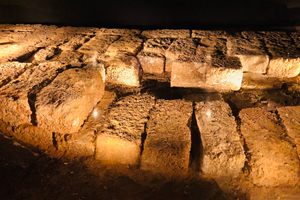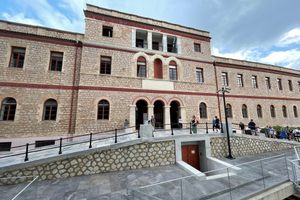About
Epidemics were a common occurrence throughout the history of the Ottoman Empire. The city of Athens was generally free from large public health issues during Ottoman occupation, however, in 1789 many of the citizens became concerned when they learned other areas of the empire were suffering from a plague. As the epidemic spread, many elder citizens recommended reviving the Ritual of Periarosis to protect against the epidemic (periarosis is an ancient Greek word for farming plow).
A procession was planned to circle the city, passing by ancient columns that according to legend contained healing powers. The elders decided to start the procession in front of the Chapel of Agios Haralambos located just south of the Acropolis. According to legend Haralambos, who was martyred in 202 CE at age 113, had the ability to halt epidemics.
The procession began with two twin heifers dragging a plow. Following the plow were citizens with a large vessel in which they had placed objects that had relevance to the epidemic or other sicknesses.
When reaching a column, citizens also placed messages and objects in its recesses. When the procession reached the farthest column, the citizens dug a large pit in front of it, slaughtered the heifers, placed their carcasses along with the vessel and its contents in the pit, and then filled it in. The column was then blessed as the protector against future plagues in the city.
This procession continued annually for over 100 years until it ended in the 1890s. This is one of the few columns confirmed by historians to be part of the original route. It stands in the middle of outdoor restaurant space in the Makrigianni area.
Related Tags
Know Before You Go
A nearby restaurant has rented the space around the column. When they are open respect should be shown to the staff and diners. They deserve to work/eat without distraction.
Other columns confirmed to be part of the procession route are in the Gazi and Kolonaki areas of the city. There is another column a block away at the corner of Chatzichristou and Miseon streets that many believe was also part of the procession route.
Community Contributors
Added By
Published
August 5, 2021






































